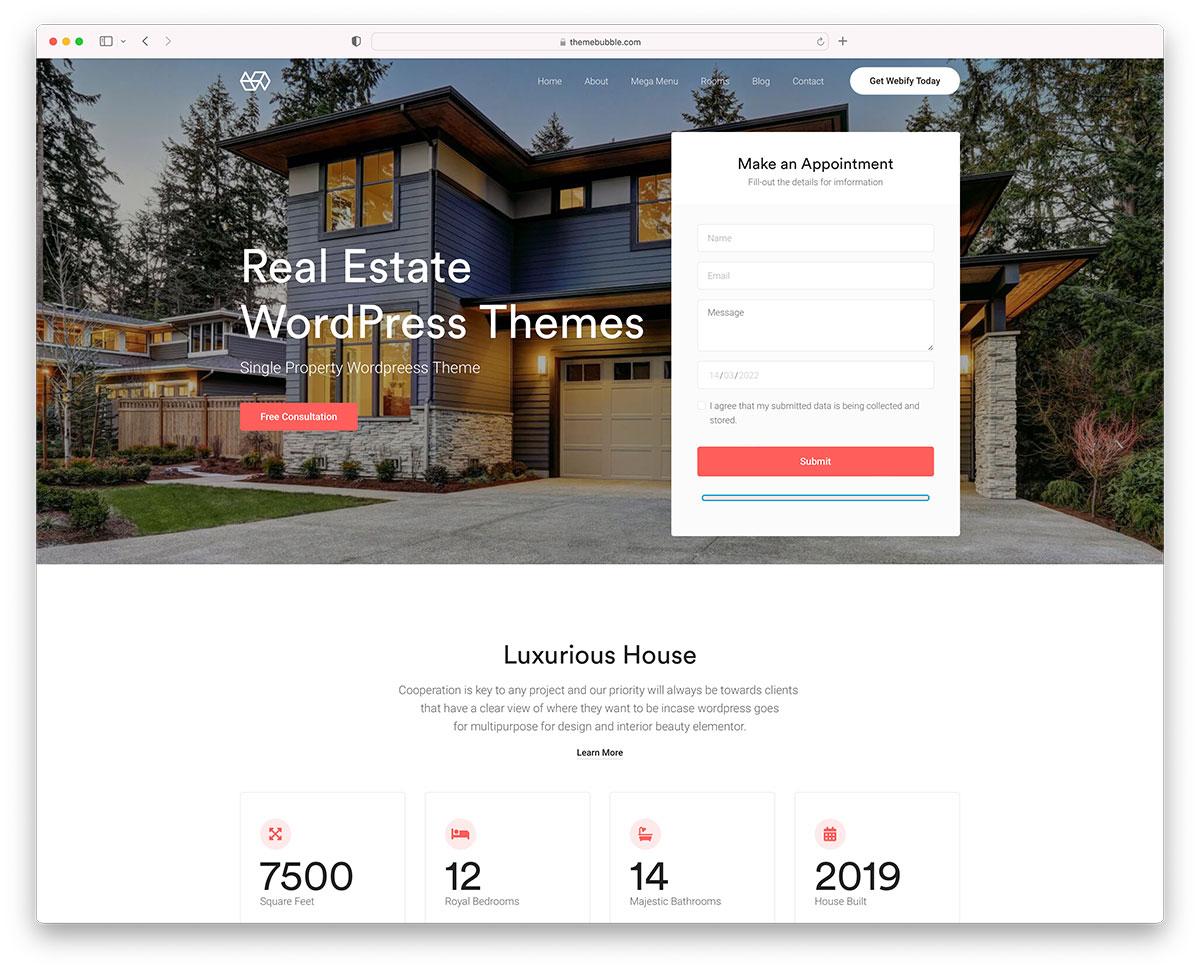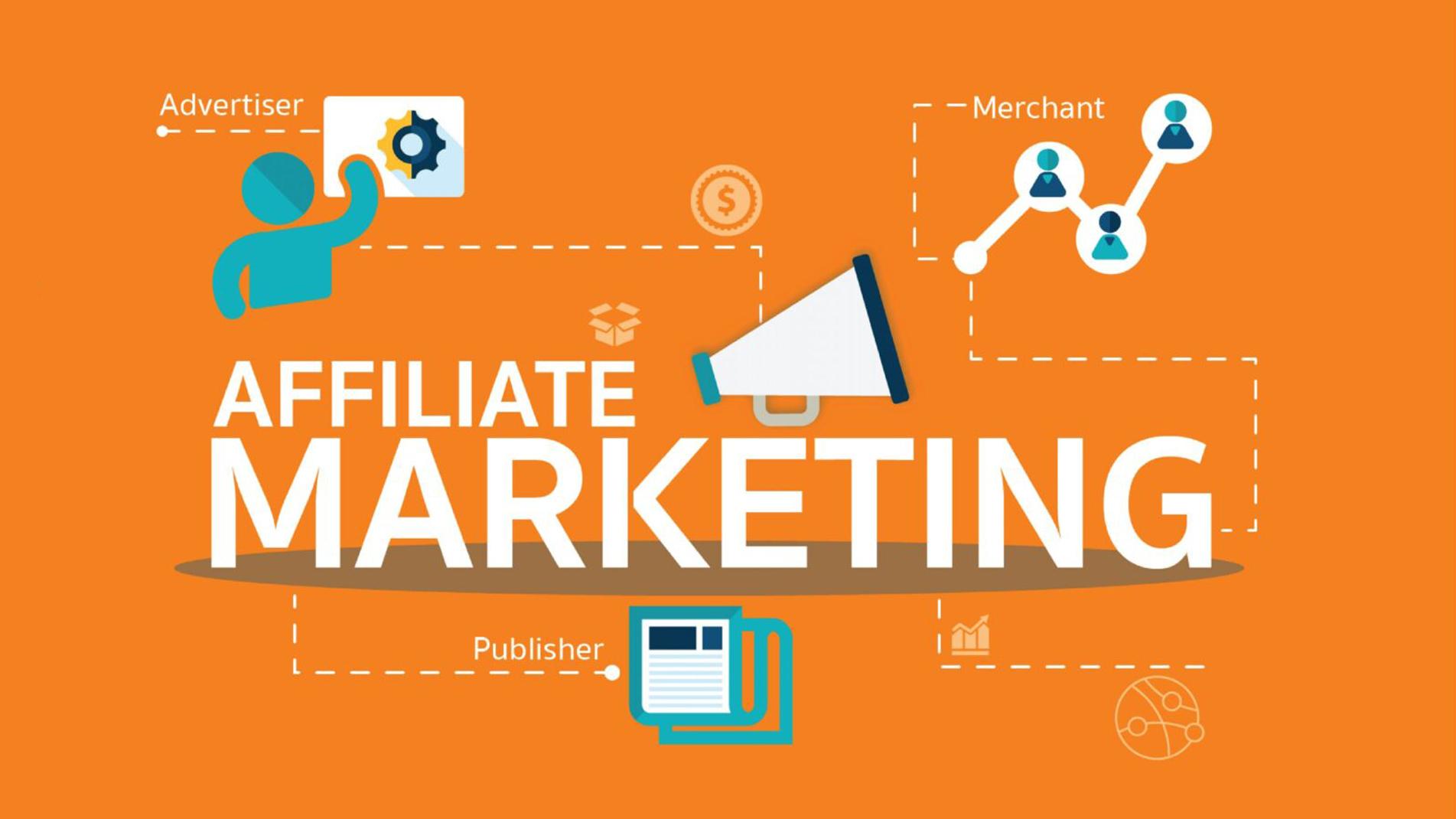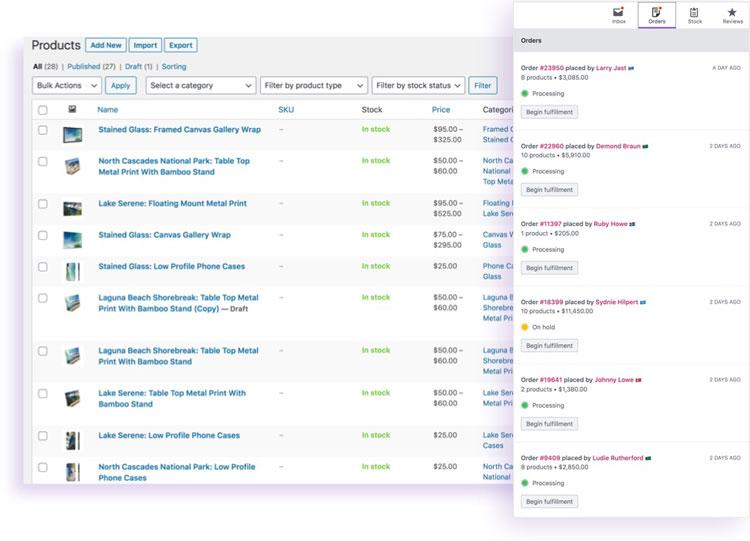In today’s digital age,where every click can lead to a potential buyer,mastering real estate web design is no longer just an option—it’s a necessity. If you’re a real estate agency looking to elevate your online presence and capture more leads, you’re in the right place.Imagine your website not just as a digital brochure, but as a powerful magnet attracting potential clients and keeping them engaged.
in this article,we’ll explore the art and science of real estate web design,revealing the key elements that not onyl make your site visually appealing but also strategically designed to convert visitors into leads. Whether you’re starting from scratch or looking to enhance your existing site, we’ll guide you through essential tips and best practices that will transform your online presence. So, buckle up! It’s time to turn your real estate website into a lead-generating machine that stands out in a crowded market. Let’s dive in!
Understanding the Importance of User-Friendly Design for Real Estate Websites
in today’s competitive real estate market, having a visually appealing website is not enough; functionality and user experience are paramount. A user-friendly design ensures that potential clients can easily navigate through property listings, contact forms, and facts about the agency without feeling overwhelmed or frustrated.
Here are some key elements that enhance usability:
- Intuitive Navigation: A well-structured menu that allows users to find what they need quickly can significantly reduce bounce rates.
- Responsive design: With an increasing number of users accessing websites via mobile devices, your site must function seamlessly across all screen sizes.
- Fast Load Times: Users are likely to abandon sites that take too long to load. Optimize images and scripts to keep your site fast and responsive.
- Clear Calls-to-Action: Strategically placed buttons that guide users toward desired actions—such as scheduling a viewing or signing up for newsletters—can boost conversion rates.
Moreover, incorporating visual elements like high-quality images and virtual tours can enhance engagement. Users are drawn to visuals that provide a clear sense of the properties, and this can significantly influence their decision-making process. A picture may speak a thousand words, but a well-designed website can motivate users to take action.
To illustrate the effectiveness of user-friendly design, consider a comparison between two real estate websites:
| Website A | Website B |
|---|---|
| Cluttered layout, slow load times | Clean design, fast loading |
| No mobile optimization | Responsive, mobile-friendly |
| Confusing navigation | Intuitive menu structure |
| Weak calls-to-action | Strong and clear ctas |
Website B, with its user-friendly design, is more likely to convert visitors into leads. By prioritizing usability, real estate agencies can foster trust and encourage users to engage more deeply with their offerings.Remember, a user-friendly design is not just a luxury; it is a necessity for capturing and retaining leads in the digital landscape.
Creating Compelling Visuals That Showcase Properties Effectively
In the competitive realm of real estate, the power of visuals cannot be overstated. High-quality images and videos serve as the first impression for potential buyers, making it essential to present properties in the best light possible.Here are some tips to create visuals that not only attract attention but also convey the essence of the properties you’re showcasing:
- Invest in Professional Photography: Hiring a professional photographer can make all the difference. professionals understand lighting, angles, and staging, ensuring each room looks its best.
- utilize Drones for Aerial Shots: Drones can capture stunning aerial views of properties, highlighting their surroundings and giving a unique perspective that traditional photography cannot achieve.
- Create Virtual Tours: Offering virtual tours allows potential buyers to explore a property from the comfort of their home. This interactive experience can drive engagement and interest.
- Showcase Lifestyle: Instead of just focusing on the property’s features, portray the lifestyle it offers. Use images that reflect the neighborhood, amenities, and nearby attractions.
Incorporating these visuals into your website is just as crucial as creating them.Ensure that your images are optimized for various devices to provide an equally compelling experience whether on a desktop or mobile. Here’s a simple checklist to follow:
| Visual Element | Optimization Tip |
|---|---|
| Images | Use high-resolution images compressed for faster loading. |
| Videos | Host on platforms like Vimeo or YouTube for seamless embedding. |
| Virtual Tours | Ensure compatibility with all devices and browsers. |
| Aerial Shots | Include a mix of wide and close-up shots to capture detail. |
Don’t forget the importance of captions and descriptions. A well-crafted caption can enhance the visual storytelling and provide context that resonates with potential buyers. Remember, each image is a piece of the narrative you’re presenting, so let them work together to create a cohesive story that pulls viewers in.
leverage social media to amplify your visuals. Platforms like Instagram and Pinterest are perfect for showcasing stunning images and attracting a broader audience. When potential buyers see your engaging content, they are more likely to share it, expanding your reach and ultimately driving more leads to your agency.

Optimizing Your Website for Mobile Users: A Must in Today’s Market
In an era where mobile devices dominate internet usage, ensuring your website is optimized for mobile users is not just a luxury—it’s a necessity. With more potential clients browsing properties on their smartphones or tablets, a seamless mobile experience can make all the difference in converting visits into leads.
To enhance your site’s mobile performance, consider the following strategies:
- Responsive Design: Implement a responsive design that adapts to diffrent screen sizes. This ensures your site looks great on any device, improving user experience and engagement.
- Fast Load Times: Optimize images and streamline code to improve loading speeds. A delay of just a few seconds can lead to high bounce rates, especially on mobile.
- Simple Navigation: Keep your navigation intuitive and accessible. Use a hamburger menu for mobile views to save space, ensuring users can easily find what they need.
- Touch-Friendly Elements: Ensure buttons and links are large enough for easy tapping. Avoid elements that are too close together, which can frustrate users.
Additionally,consider creating a mobile-first strategy when designing new content. This approach prioritizes the mobile experience, allowing you to build a website that caters to the on-the-go user. Here’s a rapid comparison of mobile versus desktop usage patterns:
| Feature | Mobile Users | Desktop Users |
|---|---|---|
| Time Spent on Site | 2-3 Minutes | 5-10 Minutes |
| Conversion Rate | 1.9% | 3.4% |
| Preferred Content | Visuals & Quick Info | Detailed Content |
By analyzing these trends, you can tailor your content to better suit mobile users, focusing on visuals and concise information that captures attention quickly. Making these adjustments not only improves user satisfaction but also enhances your SEO rankings, further driving organic traffic to your site.
Ultimately,treating your mobile site with the same importance as your desktop version is crucial in today’s competitive real estate market. Remember, the goal is to create a user-friendly experience that fosters engagement and encourages potential clients to reach out. Investing in mobile optimization is an investment in your agency’s future success.
Leveraging SEO Strategies to Increase Your Online Visibility
In the competitive world of real estate, having an attractive website is just the beginning. To truly stand out, agencies must embrace effective SEO strategies that enhance online visibility and attract potential clients. by integrating key SEO practices into your web design, you can ensure that your site not only looks good but also ranks well on search engines.
One of the first steps in optimizing your website is to conduct thorough keyword research. This allows you to identify the terms that potential clients are using to search for properties. Make sure to incorporate these keywords naturally throughout your content, including:
- Page Titles
- Meta Descriptions
- Headings and Subheadings
- Image Alt Text
Furthermore, consider creating high-quality, engaging content that addresses the needs and questions of your target audience.Blog posts, property guides, and local market analyses can position your agency as an authority in the field. Regularly updating your content not only keeps your audience engaged but also signals to search engines that your site is active, improving your chances of ranking higher.
Another crucial aspect of SEO is ensuring your website is mobile-friendly. With a growing number of users searching for properties on their phones, a responsive design is essential. Google prioritizes mobile-optimized sites in its search results, so this step is vital for capturing more leads. Additionally, enhancing loading speeds and simplifying navigation can significantly improve user experience, further boosting your SEO efforts.
don’t overlook the importance of building backlinks.Collaborate with local businesses, real estate blogs, or community websites to acquire links back to your site. This not only drives referral traffic but also improves your site’s authority in the eyes of search engines. As your link profile grows, so too will your online visibility, bringing in more potential leads.
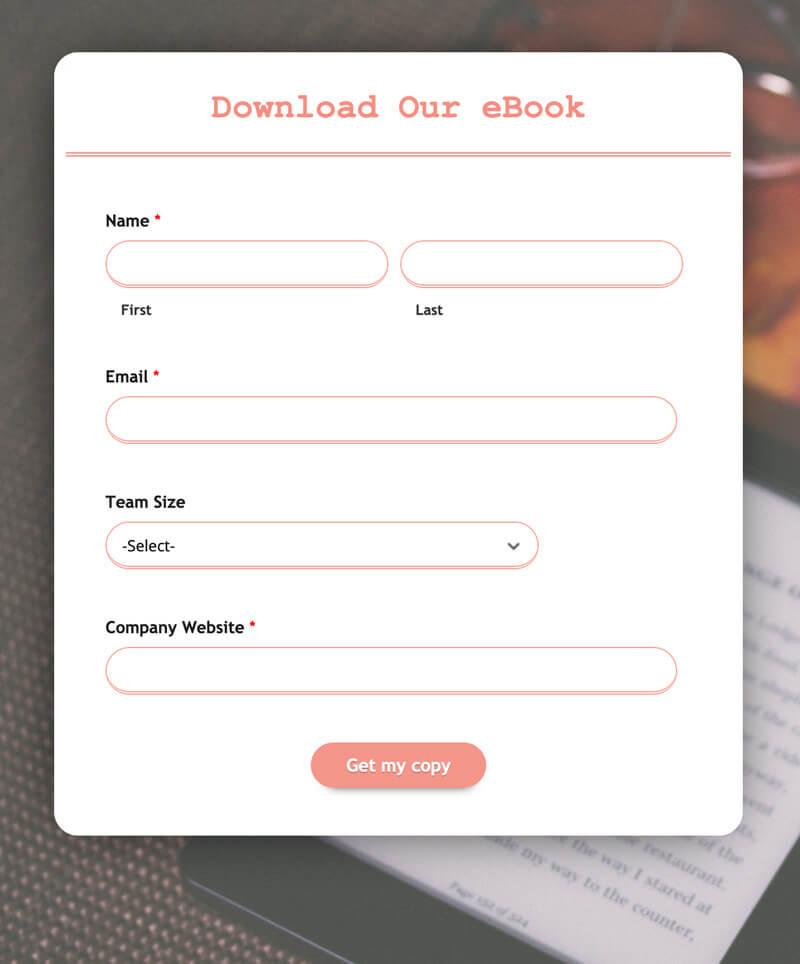
Incorporating Lead capture Forms That Convert Visitors into Clients
Creating lead capture forms that truly convert is essential for any real estate agency looking to thrive online.A well-designed form can make the difference between a curious visitor and a committed client. Here are some strategies to enhance your forms and improve conversion rates:
- Simplify Your Forms: Keep your forms short and sweet. Asking for too much information can deter potential leads. Aim for the essentials: name, email, and a primary inquiry.
- Use Clear Call-to-Actions: Your call-to-action (CTA) should be clear and compelling. phrases like “Get Your Free Home Evaluation” or “Discover the Best Listings” prompt users to take action.
- Incorporate Trust Signals: Adding elements such as testimonials, ratings, or security badges can definitely help establish credibility and encourage users to fill out your form.
Another effective tactic is to strategically place your lead capture forms throughout your website. Consider the following locations:
| Location | Reason |
|---|---|
| Homepage | First point of contact; attract immediate interest. |
| Property Listings | Engage potential buyers while they are most interested. |
| blog Posts | Capture leads from informative content; provide value. |
| Landing Pages | focused campaigns can lead to higher conversions. |
Lastly, don’t underestimate the power of follow-up. Once a lead has submitted their information, have an automated email sequence ready to nurture them. Your initial follow-up should thank them for their interest, provide additional information relevant to their inquiry, and include further CTAs that guide them down the funnel. This personal touch can significantly increase the likelihood of conversion.
Utilizing Virtual Tours and Interactive Features to Engage Users
Virtual tours and interactive features are revolutionizing the way real estate agencies connect with potential buyers. By incorporating these tools into your website,you not only enhance user experience but also significantly boost your chances of converting visitors into leads.Imagine a prospective buyer exploring a property from the comfort of their home, clicking through each room, and experiencing the space as if they where physically there. This level of engagement is not just innovative; it’s essential in today’s digital-first market.
One of the most compelling aspects of virtual tours is their ability to showcase properties in a detailed and immersive manner. Unlike traditional images, which can sometimes fall flat, virtual tours offer:
- 360-degree views: Allow users to navigate through spaces freely.
- High-definition visuals: Provide a closer look at details that matter.
- Interactive hotspots: Enable users to click on features for more information.
Moreover, integrating interactive elements such as floor plans and property comparison tools can further enhance engagement. Users love the ability to:
- View and manipulate floor plans: Understanding the layout helps in visualizing how their life would fit within the space.
- Compare multiple properties: making informed decisions by weighing options side by side.
- Utilize mortgage calculators: Getting instant financial insights propels users closer to making a commitment.
| Feature | Benefit |
|---|---|
| Virtual Tours | Increases property visibility and engagement |
| interactive Floor Plans | Enhances understanding of space |
| Mortgage Calculators | Provides financial clarity |
Ultimately, the goal is to create a seamless and informative journey for users. By leveraging virtual tours and interactive features, you empower potential buyers to explore properties at their own pace, fostering a sense of ownership and connection before they even step foot in the door. Embrace these technologies as essential components of your online strategy to not just attract visitors but to turn them into eager leads.
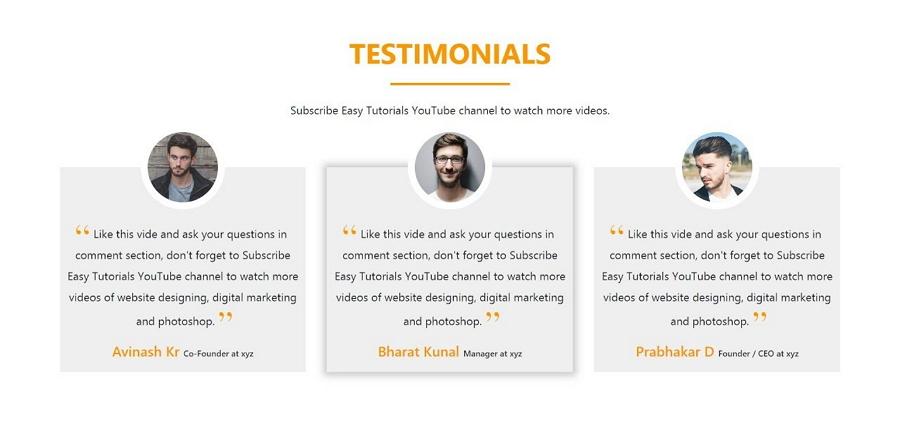
Building Trust with Testimonials and Client Success Stories
In the competitive realm of real estate, establishing credibility is essential. One of the most effective ways to build trust with potential clients is through the strategic use of testimonials and client success stories. When visitors encounter real experiences from satisfied clients, they are more likely to engage and convert into leads. These narratives serve as powerful social proof,illustrating that your agency delivers on its promises.
Displaying client testimonials prominently on your website can significantly enhance your agency’s reputation. Here are a few tips to effectively showcase these endorsements:
- Visual Appeal: Use high-quality photos of clients alongside their testimonials to create a personal connection.
- Video Testimonials: Consider incorporating short video clips of clients sharing their experiences. This adds a layer of authenticity that’s frequently enough more persuasive.
- Highlight results: Focus on specific outcomes that your clients achieved through your services, such as quick sales or significant price increases.
Beyond testimonials, client success stories can paint a vivid picture of how your agency has made a difference. These stories should detail the challenges clients faced, the solutions you provided, and the triumphant outcomes that followed. Incorporating these narratives into your content strategy can take your website to the next level. Consider structuring these stories in a table format to make them easily digestible:
| Client Name | Challenge | Solution Provided | Result |
|---|---|---|---|
| John Doe | Slow home sale | Enhanced online marketing | Sold in 30 days |
| Jane Smith | First-time buyer | Personalized guidance | Found dream home |
| Sarah Lee | Investment property | Market analysis | High ROI |
Integrating these elements not only enriches your website’s content but also fosters a sense of trust and reliability. When potential clients see tangible evidence of your impact, they are more inclined to reach out, knowing they are choosing an agency that genuinely cares about its clients’ success. Make sure to regularly update this section with fresh testimonials and success stories to maintain engagement and relevance.

streamlining Navigation for a Seamless User Experience

Harnessing the Power of Social Media Integration for Maximum Reach
In today’s digital landscape,social media is not just a platform for sharing photos or updates; it’s a powerful tool that can amplify your real estate agency’s reach exponentially.By integrating social media strategically into your website, you can create seamless pathways for potential clients to engage with your brand. When visitors see social media icons prominently displayed, they are more likely to connect with you across multiple platforms, enhancing their trust and familiarity with your agency.
To make the most of your social media integration, consider the following tactics:
- Share Property Listings: Automatically post new listings or open house events to your social media channels.Use eye-catching visuals to capture attention.
- Engage with Your audience: Incorporate live chat features or integrate comment sections that link to your social media profiles,inviting direct engagement.
- Incorporate User-Generated Content: encourage clients to share their home-buying experiences on social media, and feature those posts on your website.
Additionally, utilizing social media advertising can significantly increase your visibility. Platforms like Facebook and Instagram allow for targeted advertising based on demographics, interests, and behaviors. This capability ensures that your listings reach the right audience, increasing the likelihood of capturing qualified leads.To illustrate the benefits of targeted ads, consider this table:
| Platform | Targeting Options | Engagement Rate |
|---|---|---|
| Age, Location, Interests | 2.3% | |
| Location, Behavior, Interests | 1.9% | |
| Industry, Job Title, Company Size | 0.8% |
Furthermore, don’t forget the importance of analytics in refining your social media strategy. Use tools like Google Analytics and social media insights to track which posts generate the most engagement or lead traffic. This data can guide future content creation, ensuring that you stay aligned with your audience’s interests and preferences.
Ultimately, by harnessing the full potential of social media integration into your real estate web design, you position your agency not just as a service, but as a community hub. this approach fosters relationships that can lead to referrals and repeat business, maximizing your reach and impact in the competitive real estate market.

Analyzing Performance metrics to Continuously Improve Your Web Design
To enhance your web design’s effectiveness, it’s crucial to leverage performance metrics that reveal how users are interacting with your site. Monitoring key indicators can provide actionable insights that allow you to refine your design continuously.Here are some critical metrics to focus on:
- Page Load Time: An essential aspect of user experience, faster loading pages can reduce bounce rates and keep potential leads engaged.
- Conversion Rate: Track how many visitors take desired actions, such as signing up for newsletters or requesting property information. This will help you identify where to optimize.
- User Engagement: Metrics like average session duration and pages per session indicate how compelling your content is. If users are exiting quickly, it’s a sign that your design may need adjustments.
- Click-Through Rate (CTR): Analyze the effectiveness of your calls-to-action (CTAs) by measuring how many users click on them. A low CTR suggests the need for more appealing or better-placed buttons.
- Mobile Responsiveness: Given the prevalence of mobile browsing, ensure your site’s performance on mobile devices is at par with desktops to capture a broader audience.
Using these metrics, you can create an optimization strategy that focuses on enhancing user experience and driving conversions. Consider implementing A/B testing to compare different design elements,such as button colors or layout options. As an example, a simple change in the placement of a contact form might significantly increase conversion rates.
| Metric | Ideal Value | Action Plan |
|---|---|---|
| Page Load Time | Under 3 seconds | Optimize images and reduce server response time |
| Conversion Rate | 3-5% | Enhance CTAs and streamline the inquiry process |
| User Engagement | 3+ pages/session | Create more engaging content and improve navigation |
Moreover,keep an eye on user feedback through surveys and usability tests.Understanding the sentiment and challenges faced by your visitors can provide deeper insights beyond what numbers show. Use this feedback to cultivate a design that resonates with your audience, making it easier for them to navigate your site and find what they need.
By systematically analyzing these performance metrics and adjusting your strategy accordingly, you can create a user-friendly experience that not only attracts visitors but also converts them into leads, amplifying your agency’s success in the competitive real estate market.
Frequently Asked questions (FAQ)
Q&A: Mastering Real Estate Web Design – Capturing more Leads Online
Q1: Why is web design so crucial for real estate agencies looking to capture more leads?
A1: Great question! In today’s digital world, your website is often the first impression potential clients have of your agency. A well-designed,user-friendly website not only showcases your properties effectively but also builds trust and credibility.Think of it as your agency’s online storefront—if it looks appealing and is easy to navigate, visitors are more likely to stay longer and engage with your listings.
Q2: What are the key elements of effective real estate web design?
A2: There are several crucial components to consider. First, mobile responsiveness is a must—most users browse on their phones, so your site should look good and function well on all devices. Second,high-quality images and virtual tours can make your listings pop! Additionally,intuitive navigation,clear calls-to-action,and easy access to contact information can help guide visitors toward becoming leads.don’t forget about SEO; optimizing your site for search engines can significantly increase your visibility online!
Q3: How can real estate agencies enhance user experience on their websites?
A3: User experience is everything! Start by ensuring fast loading times—nobody likes a slow website. Use a clean, modern design with plenty of white space so visitors aren’t overwhelmed. Implement easy search filters for properties, and consider adding a chat feature for instant interaction. Lastly, engaging content like market reports, local guides, and blog posts can keep users coming back for more.
Q4: What role dose content play in real estate web design?
A4: Content is king! Compelling,informative content not only engages your audience but also boosts your site’s SEO. Share success stories, neighborhood highlights, and tips for buyers and sellers. This positions you as an expert in your field and builds trust with potential clients.Plus, regular blog posts can improve your search rankings, helping you attract even more traffic.
Q5: How can agencies effectively use calls-to-action (CTAs) on their websites?
A5: CTAs are essential for guiding users toward taking action, whether it’s signing up for a newsletter, scheduling a showing, or contacting you for more information. Make your CTAs prominent and persuasive—use action-oriented language like “Get Your Free Market Analysis” or “Schedule a Tour Today!” Place them strategically throughout your site,especially on high-traffic pages.
Q6: Are there any tech tools or platforms you recommend for building a real estate website?
A6: Absolutely! Platforms like WordPress, Wix, or squarespace offer user-friendly options for building websites without needing extensive coding knowledge. for a more specialized solution, consider real estate-specific platforms like IDX Broker or Real Geeks, which provide integrated property search functionalities. Don’t forget to invest in analytics tools like Google analytics to track visitor behavior and refine your strategy!
Q7: What are some common mistakes agencies should avoid in their web design?
A7: One major mistake is failing to optimize for mobile devices—this can alienate a huge portion of your audience. Other pitfalls include cluttered designs that overwhelm users, neglecting SEO, and using low-quality images. don’t overlook the importance of regular updates; an outdated website can give the impression that your agency isn’t active or invested in its online presence.
Q8: How can a well-designed website lead to increased conversions and more clients?
A8: A well-designed website creates a seamless experience that encourages users to explore and engage with your content. The more time they spend on your site, the higher the chances they’ll convert into leads. By making it easy for visitors to find what they need and providing clear pathways to contact you, your agency can transform casual browsers into committed clients.
Q9: What’s your final piece of advice for real estate agencies looking to improve their web design?
A9: Invest time in understanding your audience and their needs. Your website should reflect your brand while also catering to the expectations of your potential clients. Regularly gather feedback, analyze visitor behavior, and be willing to adapt and improve. In the competitive world of real estate, a stellar website can be your secret weapon for capturing more leads and standing out in the market. Happy designing!
Insights and Conclusions
As we wrap up our journey through the world of real estate web design, it’s clear that mastering this craft is more than just a nice-to-have—it’s a game changer for any agency looking to capture leads online. Your website is often the first point of contact potential clients have with your brand, and we all know how significant first impressions are.
By investing in a user-friendly, visually appealing, and informative website, you’re not just showcasing properties; you’re building trust and establishing your authority in the market. Remember, every element of your site—from navigation to mobile responsiveness—plays a crucial role in guiding visitors toward that all-important action: reaching out to you.
So, ask yourself: Is your current website setting you up for success? if not, now is the time to make those changes. Embrace these design principles, keep your audience in mind, and don’t hesitate to get creative! The digital landscape is ever-evolving, and staying ahead of the curve means being proactive about your online presence.
In a competitive market, those who prioritize a strong web design strategy will undoubtedly stand out. Start implementing these tips today, and watch as your lead generation efforts transform before your eyes. After all,a well-designed website is not just a tool; it’s your most powerful ally in the quest for real estate success. Happy designing!

